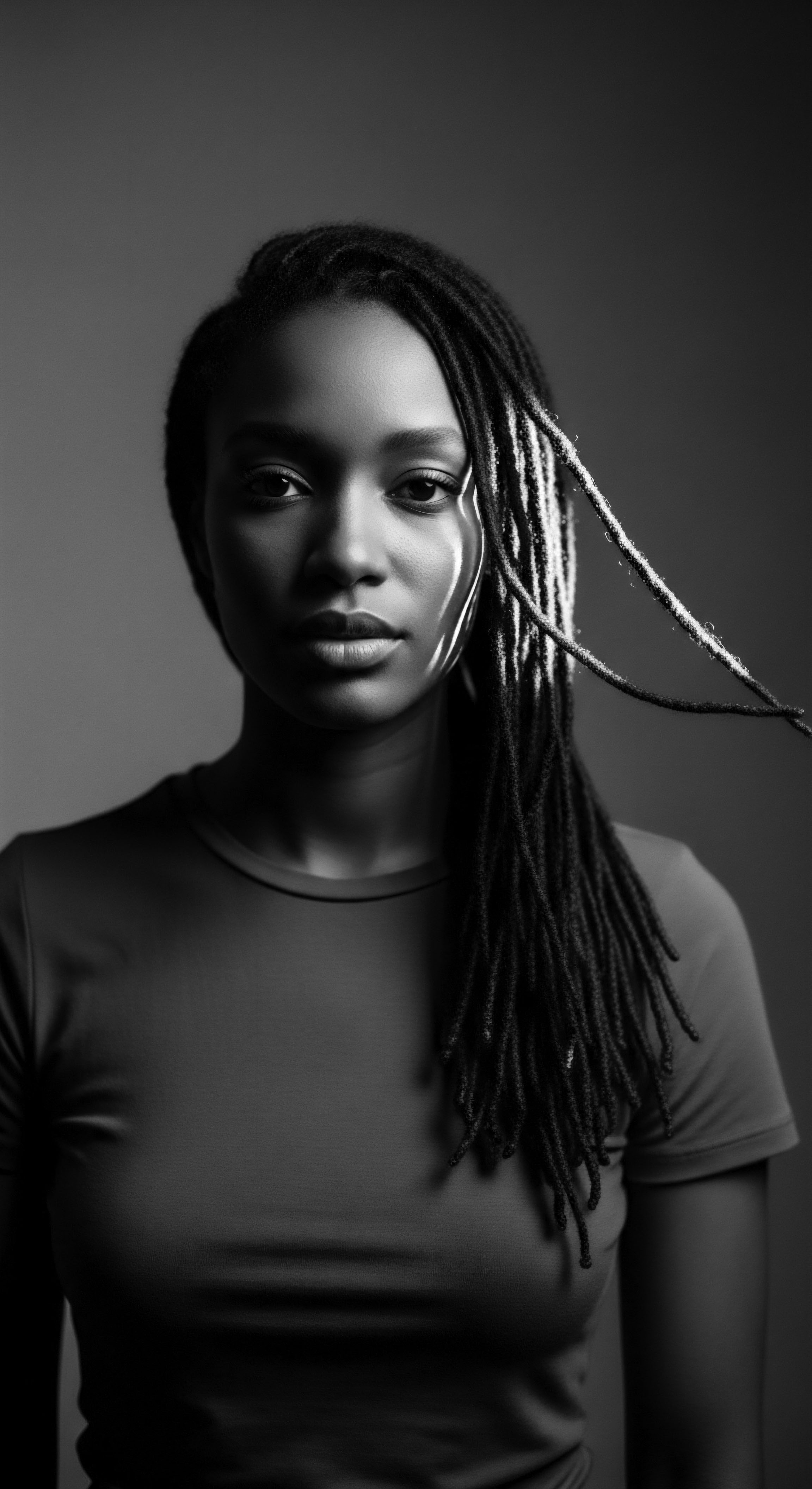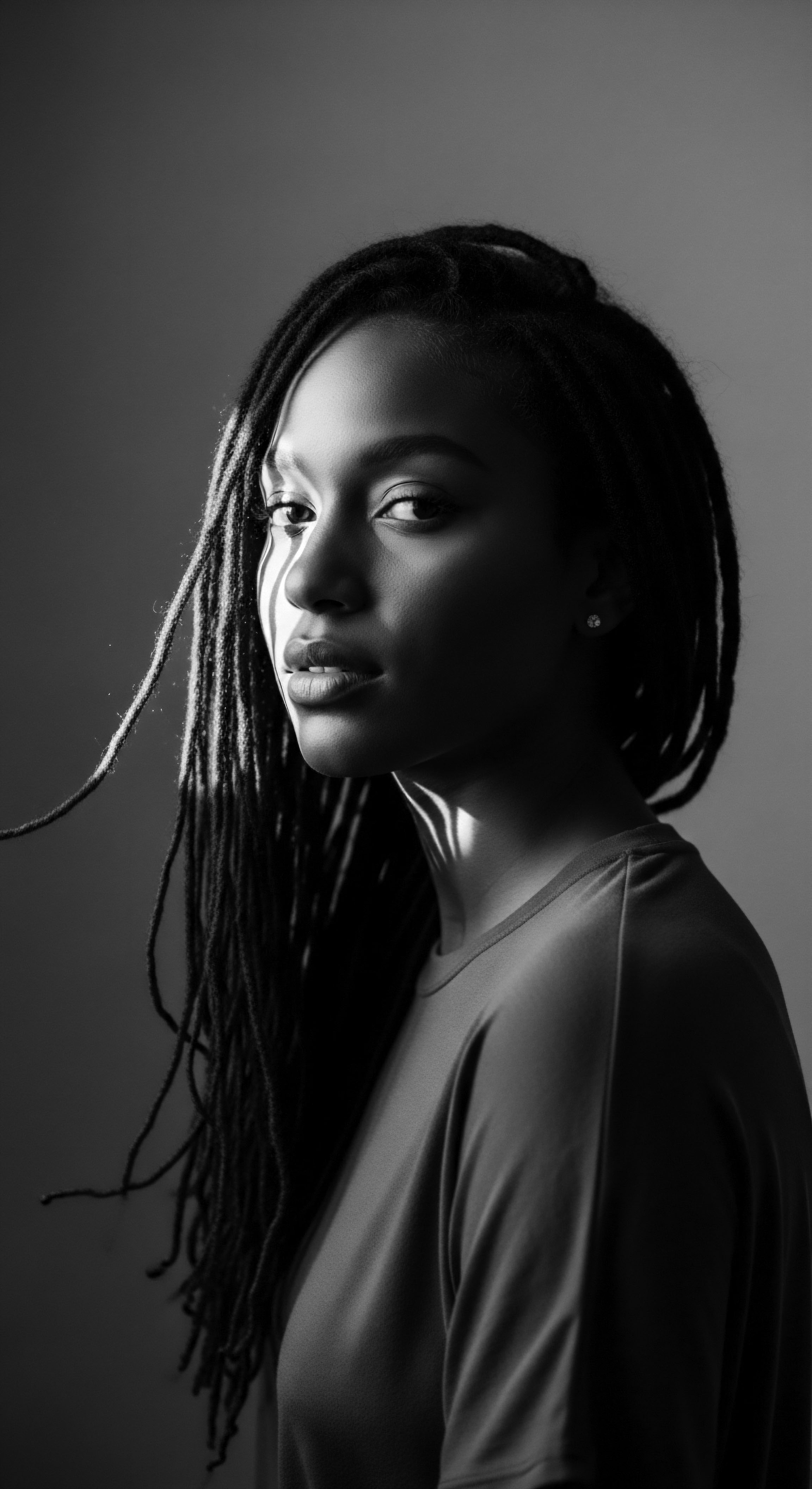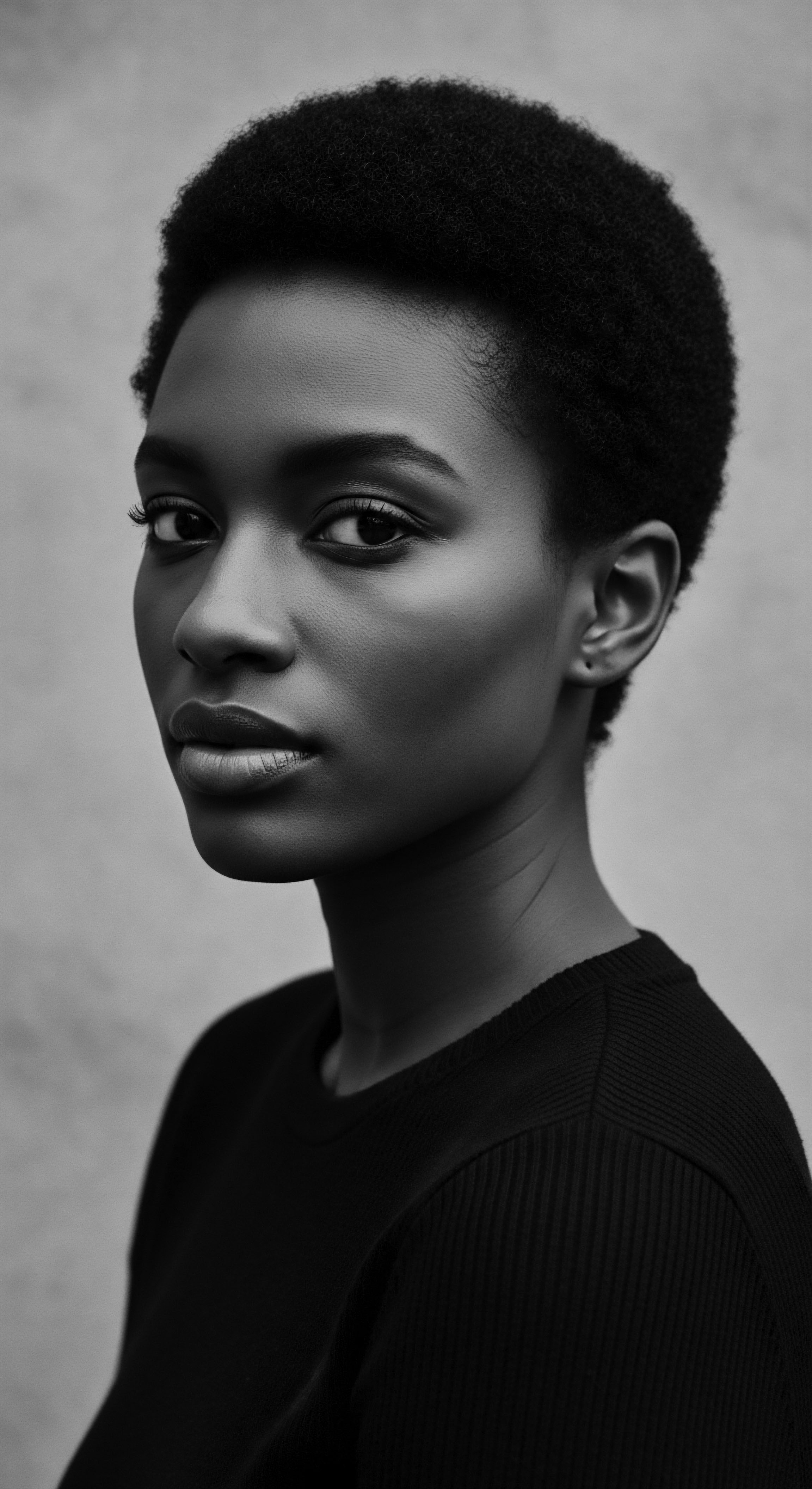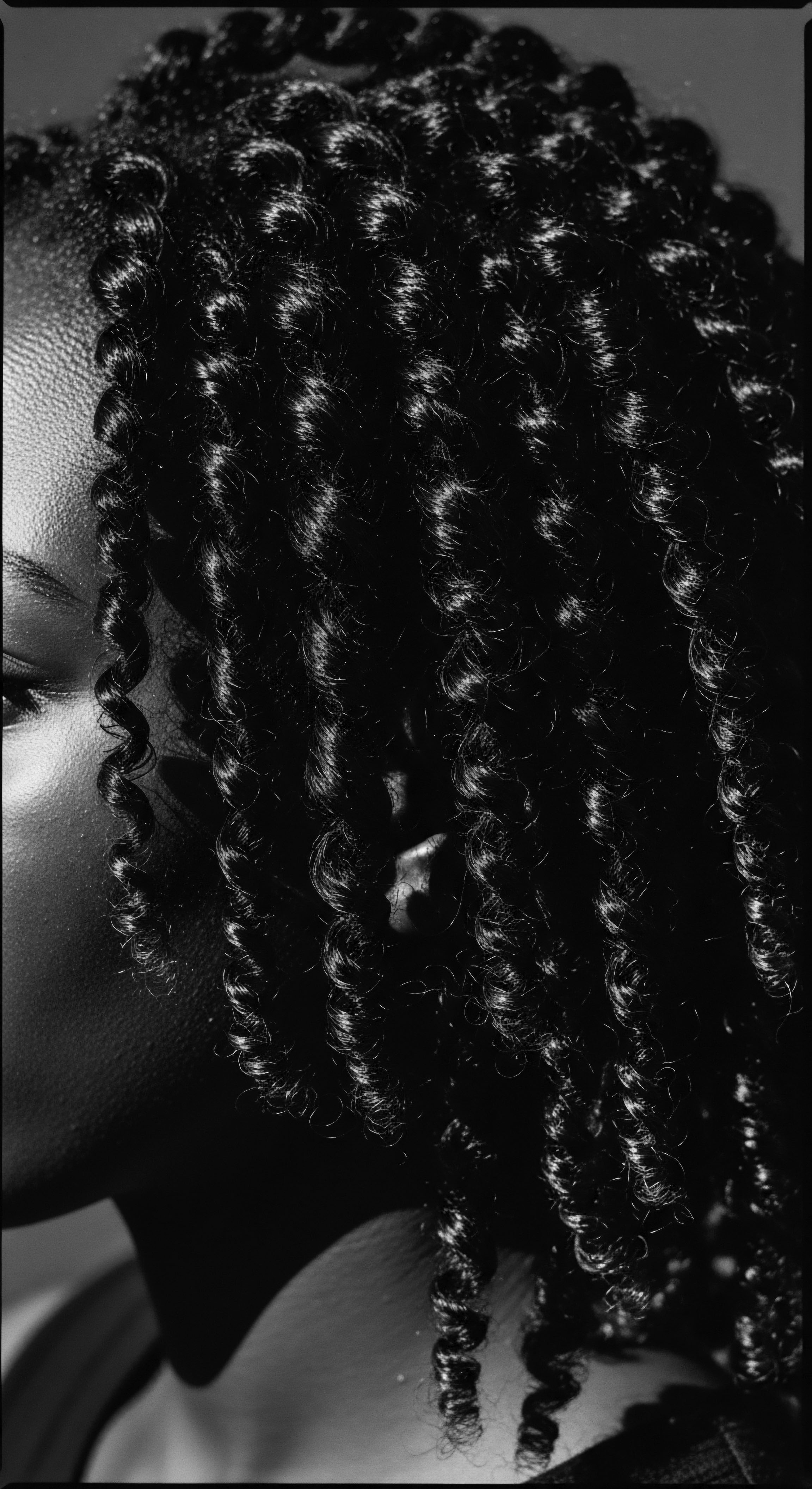
Roots
The very strands upon our heads carry echoes of ancestors, whispers of triumphs, and the resilience of a spirit that refused to be broken. For those whose lineage traces through the currents of the transatlantic slave trade, textured hair stands as a living testament, a biological archive holding generations of wisdom, struggle, and defiance. To truly grasp the historical role hair tools played in resistance during slavery, we must first allow ourselves to feel the deep, personal connection to this heritage. This journey begins not with the clippers of the enslaver, but with the ceremonial combs and skilled hands that honored hair as a conduit to the divine, a marker of identity, and a repository of communal memory long before the brutal disruptions.

The Sacred Language of African Hair Before Chains
In pre-colonial Africa, hair transcended mere adornment; it was a vibrant language spoken through intricate styles. Hairstyles communicated a person’s geographic origin, marital status, age, ethnic identity, religion, wealth, and social standing. For instance, among the Yoruba, hair was considered the most elevated part of the body, a spiritual antenna, and braided styles could even convey messages to the gods.
This elaborate system of communication required hours, sometimes days, of meticulous care—washing, oiling, braiding or twisting, and decorating with cowrie shells, beads, or cloth. These communal rituals, often involving family and friends, strengthened social bonds and preserved ancestral knowledge.
Ancestral African hair practices were a vibrant language, speaking of identity, status, and spirit.

The Stripping Away of Identity
The first act of profound violence upon enslaved Africans was often the forced shaving of their heads upon capture and transport. This deliberate act aimed to dehumanize, to strip away identity and disconnect individuals from their spiritual roots and communal ties, effectively erasing their former existence. Imagine the profound disorientation, the visceral loss, as this vital link to self and community was violently severed. With traditional tools, oils, and the communal time for care vanished, newly arriving Africans found their hair becoming matted, tangled, and damaged.

Makeshift Ingenuity in Harsh Realities
Despite the brutal conditions of enslavement, the human spirit, especially when rooted in ancestral memory, finds ways to adapt and resist. Deprived of their traditional combs, picks, and natural oils, enslaved Africans began to fashion implements from whatever was at hand. This often meant shaping pieces of wood, bone, or even metal scraps into rudimentary combs. Oral histories recount enslaved individuals using eating forks, sometimes heated on a stove, as makeshift hot combs.
Simple items like bacon grease, butter, kerosene, and even cornmeal became the earliest, albeit harsh, conditioners and dry shampoos. These improvised tools and remedies, born of necessity and ingenuity, were a quiet rebellion, a refusal to completely surrender the heritage of hair care.
| Pre-Colonial African Tools Hand-carved combs (wood, bone, ivory, adorned with symbols) |
| Improvised Tools During Slavery Eating forks (sometimes heated) |
| Pre-Colonial African Tools Elaborate picks (often with spiritual or social engravings) |
| Improvised Tools During Slavery Scraps of wood, bone, metal shaped into combs |
| Pre-Colonial African Tools Natural oils, butters, herbs, powders (e.g. shea butter, coconut oil) |
| Improvised Tools During Slavery Bacon grease, butter, kerosene, animal fats |
| Pre-Colonial African Tools Decorative elements (beads, shells, cloth, gold) |
| Improvised Tools During Slavery Simple cloth, scarves (often repurposed) |
| Pre-Colonial African Tools The transition reflects a tenacious commitment to hair care, adapting ancestral knowledge to extreme adversity. |
Even in the face of dehumanizing conditions, the very act of maintaining one’s hair, however crudely, was a defiant assertion of humanity. These acts connected them to a past that slavery sought to erase and set the stage for hair’s larger role in covert resistance.

Ritual
The ritual of hair care, once a joyous communal celebration in African societies, transformed under the duress of slavery into an act of quiet, powerful resistance. Sundays, often the sole day of rest, became the time for enslaved individuals to attend to their hair, sharing scarce resources and skills. These gatherings, though shadowed by oppression, became spaces of solace, community, and the secret transmission of ancestral wisdom. The hands that meticulously braided or styled hair were not merely grooming; they were preserving a heritage, passing on a legacy of defiance.

What Hidden Messages Did Braided Strands Carry?
Among the most profound examples of hair tools in resistance is the ingenuity of cornrows. These tightly braided rows, lying flat against the scalp, were not just a practical style for managing textured hair in harsh conditions. They became sophisticated, covert communication systems, acting as maps, conveying escape routes, and hiding valuable resources.
Cornrows transformed into covert cartography, silently guiding paths to liberty.
In Colombia, specifically, a striking historical account highlights this use. Enslaved Africans, led by figures like Benkos Biohò who established the free village of Palenque de San Basilio, used cornrow patterns to design escape routes. One style, known as “departs,” featured thick, tight braids tied into buns, signaling plans for escape.
Another, with curved braids laid close to the scalp, represented the winding roads and paths of escape. The very texture of African hair, often described as “coarse,” paradoxically aided this strategy, allowing the intricate patterns to remain stable and effectively conceal these vital messages.

Beyond Maps ❉ Sustenance and Subterfuge
The resilience embedded within these practices extended to literal survival. Enslaved women, particularly rice farmers from West Africa, braided rice seeds, and sometimes even gold nuggets or small tools, into their cornrows before being forcibly transported. This quiet act of defiance was a desperate attempt to carry a piece of their homeland and ensure sustenance upon arrival in an unknown, hostile land.
These seeds were not just food for the journey; they were the promise of future harvests, a continuation of agricultural heritage in foreign soil, and a testament to an unyielding will to thrive (Carney, 2001). The historical record points to this practice contributing to the establishment of rice agriculture in parts of the Americas where it was previously unknown, a tangible legacy of hidden resistance.
- Departes ❉ A style of thick, tight braids tied into buns, signaling impending escape plans, notably in Colombia.
- Curved Braids ❉ Patterns of braids representing winding roads or paths to freedom, especially in escape narratives.
- Seed Cache Braids ❉ Styles used to hide rice seeds, gold, or small tools for survival post-escape.

Headwraps ❉ From Imposition to Adornment
Another significant aspect of hair’s role in resistance involves headwraps. Initially, head coverings were a practical response to the lack of adequate hair care tools and time, shielding hair from the elements during labor. Yet, they soon became a site of cultural assertion. In places like Louisiana, the Tignon Law of 1786 mandated that Black women, whether free or enslaved, cover their hair as a marker of their perceived inferior status to white women.
However, Black women responded not with submission, but with artistry. They transformed these mandated coverings into elaborate, colorful, and decorative works of personal expression, adorning them with jewels and tying them in intricate, distinctly Afro-centric patterns. This act defied the law’s intent, reclaiming the headwrap as a symbol of beauty, pride, and covert resistance. The headwrap became a canvas for identity, a powerful statement in the face of forced conformity, a legacy that endures in modern Black fashion and cultural identity.

Relay
The survival strategies rooted in hair care during slavery did not merely disappear with emancipation; they became part of a continuing relay of heritage, adapted and reinterpreted across generations. The scientific properties of textured hair itself, its unique structure, contributed to the efficacy of these resistance tactics, and its enduring qualities continue to inform our understanding of resilience.

How Did Hair’s Biology Inform Resistance Strategies?
Textured hair, characterized by its coiled, kinky, or curly patterns, possesses distinct biological properties. It is often described as having larger follicles and high density, meaning more hair strands grow closer together from the scalp, creating a fuller appearance. This inherent density and coil pattern, often denigrated as “wooly” or “matted” by enslavers, was precisely what made it an ideal medium for hiding seeds, gold, and intricately braiding escape routes.
The tightly coiling strands could hold small objects securely and maintain complex braid patterns over time, a biological advantage turned into a tool for freedom. This physical characteristic, once weaponized as a marker of perceived inferiority, became a silent ally in the fight for liberation.
The very structure of textured hair, with its natural tendency to lock and hold, allowed for styles that were not only aesthetically significant but functionally strategic. The ability to create braids that lay flat against the scalp, maintaining their shape and concealing their contents, speaks to a scientific understanding, however intuitive, of hair’s capabilities. This inherent quality allowed for the creation of secret communication networks, a testament to the biological makeup of Black hair and the ingenuity of those who wore it.

The Echoes of Resistance in Modern Identity
The era of slavery deeply influenced the perception of textured hair, leading to the internalization of Eurocentric beauty standards. “Good hair,” often meaning straighter, more European-like hair, was associated with privilege and better treatment, while kinky or coiled hair was pathologized. This historical conditioning continues to influence societal norms and perceptions within the Black community and beyond.
However, the spirit of resistance that marked the slave era continues to resonate. The Civil Rights Movement of the 1960s saw the resurgence of natural hairstyles, particularly the afro, as a powerful symbol of Black pride, activism, and a rejection of imposed beauty ideals. This deliberate choice to wear hair in its natural state was a direct challenge to the legacy of denigration, a reclaiming of ancestral beauty.
The afro comb, or pick, with its distinct design, became a political symbol, often sporting a clenched fist, declaring “I love my hair, and I love who I am”. This continues the long lineage of hair tools serving as instruments of defiance and cultural affirmation.
| Physical Characteristics of Textured Hair Coiled Structure and natural ability to lock. |
| Cultural and Resistance Meaning Facilitated the creation of stable, concealed braids for maps and hiding objects. |
| Physical Characteristics of Textured Hair High Density and volume. |
| Cultural and Resistance Meaning Enabled the discreet concealment of seeds, gold, and other small survival items. |
| Physical Characteristics of Textured Hair Resilience and strength when maintained. |
| Cultural and Resistance Meaning Symbolized the enduring spirit and continuity of identity despite brutal oppression. |
| Physical Characteristics of Textured Hair The biological qualities of textured hair were harnessed for survival, underscoring its inherent strength as a cultural asset. |
The ongoing conversation about hair discrimination and the celebration of natural hair within contemporary society are direct descendants of these historical struggles and acts of resistance. Laws such as the CROWN Act, which seeks to outlaw discrimination based on hair texture and protective hairstyles, are modern manifestations of the fight for hair freedom that began centuries ago. The wisdom of ancestral care, the ingenuity of makeshift tools, and the defiant spirit woven into each strand continue to shape the journey of textured hair heritage today.

Reflection
The historical journey of hair tools in resistance during slavery reveals a profound truth ❉ humanity’s spirit, even under the most crushing oppression, finds inventive and deeply personal ways to endure. Textured hair, in its very structure and the practices surrounding its care, served as a silent, yet powerful, canvas for survival, communication, and profound cultural memory. The rudimentary combs fashioned from scraps, the intricate braids that held maps to liberty, and the vibrant headwraps that defied demeaning laws stand as luminous testaments to an unyielding will.
Each twist, coil, and strand of textured hair today carries the ancestral echoes of defiance. It is a living, breathing archive of resilience, a tangible connection to those who used ingenuity and artistry to reclaim their identities. The legacy of these practices reminds us that care for textured hair is not merely cosmetic; it is a continuation of sacred rituals, a dialogue with our heritage, and a recognition of the profound agency exercised by those who came before us.
This understanding invites us to view each hair care tool, each product, not just for its function, but as a link in a long, unbroken chain of cultural preservation and enduring spirit. The ‘Soul of a Strand’ beats with this history, guiding us to honor the past as we nurture our present and shape our future.

References
- Byrd, Ayana, and Lori L. Tharps. Hair Story ❉ Untangling the Roots of Black Hair in America. St. Martin’s Press, 2001.
- Carney, Judith A. Black Rice ❉ The African Origins of Rice Cultivation in the Americas. Harvard University Press, 2001.
- Dennie, Nneka D. Can’t Stand the Heat ❉ Heat Projections and Hot Comb Resistance on African American Women’s Hair 1860 – Present. Parsons School of Design, 2022.
- Griebel, Helen. “The African American Woman’s Headwrap ❉ A Cultural History.” The Journal of American Folklore, vol. 104, no. 412, 1991, pp. 245-274.
- Jacobs, Harriet A. Incidents in the Life of a Slave Girl. Ticknor and Fields, 1861.
- Mills, Sarah. Gender and Colonialism. Pearson Longman, 2013.
- Nabugodi, Mathelinda. “Afro Hair in the Time of Slavery.” University of Cambridge, 2022.
- Rosenthal, Angela. The Art of Dress ❉ Fashion, Gender, and the Body in English Literature and Culture, 1580-1920. Cambridge University Press, 2009.
- Simon, Diane. Hair ❉ Public, Political, Extremely Personal. Yale University Press, 2015.
- Trainor, Kevin. The Negro in Business ❉ A History of the Development of Negro Business Institutions in America. Createspace Independent Publishing Platform, 2016.
